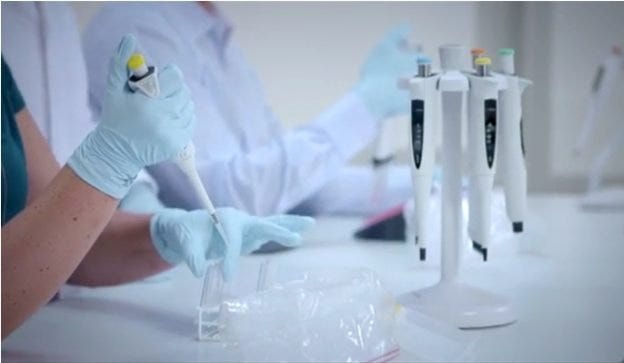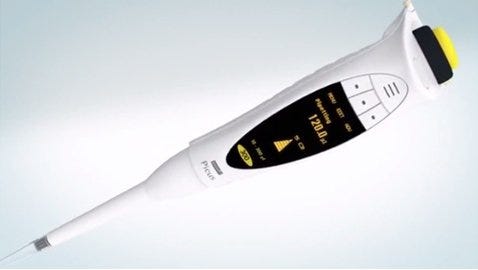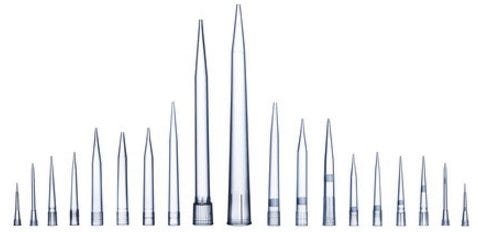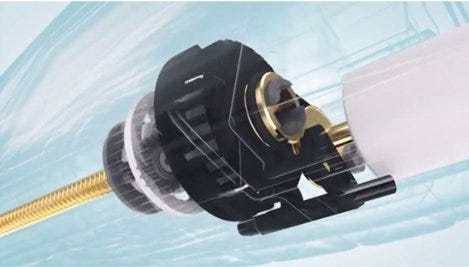- +1 (714) 578-6100
Hours Mon - Fri, 07:00 AM - 06:00 PM (Pacific Time)

Why Calibrate Gravimetric Pipettes?
Posted:
May 26, 2016
Right on the heels of a blog published on Laboratory-Equipment.com called “How to Improve Pipetting Techniques,” we present this discussion about calibration of gravimetric pipettes. Most labs are required to complete periodic calibration of instruments, as per documented protocols. Whether the tasks are performed by lab staff or a vendor, it’s a time-consuming and exacting process. The alternative? Data and test results that may be questioned or challenged.
Considerations for Calibration
Pipette calibration is performed by laboratories to ensure that their pipettes are functioning within given (documented or established) parameters. In fact, pipettes that are not routinely calibrated can produce vastly different dispensing volumes than expected, which results in ambiguous or even erroneous data sets.

Picus single-channel electronic pipette by Sartorius
When determining how to service your laboratory’s pipettes, consider these factors. First, a laboratory manager or principal investigator must consider the needs of the laboratory against any budgetary constraints. Due to the large number of pipettes commonly found in a typical lab, the cost of performing these calibrations can add up!
The laboratory must also decide if these procedures will be periodically performed in-house by lab personnel or outsourced to an outside company or service. Pipettes must be calibrated by an accredited third-party agency according to ISO 17025, and certified to be operating under normal parameters. Periodic calibration by lab technicians, however, may catch discrepancies before they become problems.
Use of an accredited third-party laboratory is often valid for six months and allows labs to use these pipettes in both routine and clinical testing. These testing procedures ensure that reproducible and unbiased tests have been performed, and that the pipettes achieve the parameters required for accuracy and reproducibility.

Pipette tips for capturing and dispensing known volumes of liquid.
Calibration Procedures
Pipette calibrations are commonly performed using gravimetric procedures due to their simplicity, accuracy and traceability. In these procedures, an aliquot of distilled water is placed into a vessel, and the weight of the vessel is measured using a (calibrated!) analytical balance. The mass (or density) of water is a known constant, but since temperature, barometric pressure and humidity affect water’s density, these conditions are controlled and recorded for the final calculation of the exact volume. As with many experiments with variables, these procedures are repeated a number of times to ensure that the results are reproducible.
Although gravimetric calibration measurements are commonly performed by ISO-accredited testing laboratories, this does not necessarily ensure that the pipette will function within the dispensing parameters for every liquid or in every environment. Example: when the ambient temperature in the testing laboratory is different than the actual environment where the pipette will be used.
Ambient conditions in a testing environment typically will conform to a narrow range of temperature, humidity and barometric pressure set-points when performing experiments. The pipette might then be moved into a cold room or a negative pressure clean room with very different environmental conditions. The resulting density of liquid in these situations will be significantly different from that of the testing environment and data may not conform to expected results.

A peek inside an electronic pipette. Image by Sartorius.
Furthermore, because water is commonly used for gravimetric pipette calibration, it does not always ensure proper performance when using other liquids with different capillary pressures or surface tensions. Thus, it is advised to perform calibrations in an environment that most closely matches that in which the pipette will commonly be used. Similarly, it is important to make note of the type of liquid being dispensed, compensating for any deviations compared to the water standard.
When a pipette is found to need calibration, the adjustment of these pipettes is best left to qualified professionals (according to ISO requirements). Technicians or engineers can recalibrate most manual air-displacement pipettes, however some complex electronic pipettes may require more seasoned technicians who are familiar with the instruments and will bear the burden of time and effort to make certain the pipettes are within spec.
Read more about mechanical and electronic pipettes offered at Laboratory-Equipment.com.
Terra Universal is the leading expert in the design and fabrication of ISO rated cleanrooms, furnishing and supplies.
Get a free consultation from one of our cleanroom specialists:
Call (714) 459-0731


